|
“CAPTAIN ALBERTO FERNÁNDEZ MONTES DE OCA” MINE
When it was closed in 1997, the mine named after Captain Alberto Fernández Montes de Oca was being restored within the historical area of Matahambre, declared National Monument on January 24th of 2000.
This place contains one of the main elements of heritage used in the production of copper ore with technology from the first decades of the XX century.
A site well worth visiting is the Municipal Museum of the Mines of Matahambre, in the municipality of the same name in the province of Pinar del Río.
This institution exhibits instruments and equipment related to the site’s exploitation, in which a collection of old photographs are one of the most outstanding, due to their testimonial value.
The interior of the ancient mine can also be visited in the company of expert guides that will lead you through places you never imagined, even in your wildest dreams.
For more information:
www.cuba-culturaltours.com
,
www.cuba-museums.com
,
www.cuba-pinardelrio.com
|
|
|
CEJA DEL NEGRO
This historical site is found west of the town of Pilotos, which is part of the municipality of Consolación del Sur, in the province of Pinar del Río.
It was the site of a bloody battle, among the last to take place at the end of the XIX century between the Cuban Mambises troops (as the Cuban insurrectionists were called) and the Spanish Colonial Army.
The skirmish became a great battle, even though it only lasted a day, due to the large numbers of soldiers on both sides, where units of the three brigades (Infantry, Cavalry and Artillery) took part. The Cuban forces, of about 800 men, defeated two combined enemy columns that outnumbered them, and only suffered 227 casualties in the process and shot 50 000 rounds of ammunition.
This site was declared a National Monument on October 10th of 1978.
For more information:
www.cuba-history.com
,
www.cuba-pinardelrio.com
,
www.aboutcuba.com
|
|
|
CUBAN POLIMITA SNAILS (POLIMITAS CUBANAS)
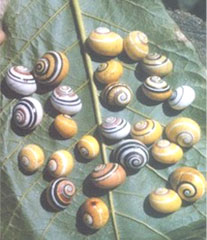 They are of an extraordinary beauty. The ideal place for finding them and hoarding a good collection is in the most remote places of the famous Valley of Viñales (Valle de Viñales), in the western-most province of Pinar del Río, although they can be found in other areas of the national geography, but in scarcer numbers.
These terrestrial molluscs of the sacricia species only live three years and a half as maximum and the most appropriate moment for collecting them is from August to September, because from November on they start to hibernate underground until March, when they surface to lay from 15 to 25 tiny eggs.
They multiply rapidly since they are hermaphrodites and fertilise themselves. The colourful polimita snails are of a prehistoric origin.
They are of an extraordinary beauty. The ideal place for finding them and hoarding a good collection is in the most remote places of the famous Valley of Viñales (Valle de Viñales), in the western-most province of Pinar del Río, although they can be found in other areas of the national geography, but in scarcer numbers.
These terrestrial molluscs of the sacricia species only live three years and a half as maximum and the most appropriate moment for collecting them is from August to September, because from November on they start to hibernate underground until March, when they surface to lay from 15 to 25 tiny eggs.
They multiply rapidly since they are hermaphrodites and fertilise themselves. The colourful polimita snails are of a prehistoric origin.
For more information:
www.cuba-fauna.com
,
www.cuba-lasterrazas.com
,
www.cuba-pinardelrio.com
|
|
|
Great Cavern of Santo Tomás
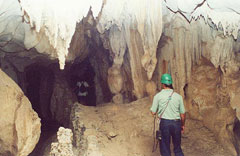 In 1954, Dr. Antonio Nuñez Jiménez led the first expedition to this site, near the tourist area of Viñales, in the Sierra del Rosario.
Back then, no one could imagine that these caverns would be admired later on as the most important in Cuba, not only due to their magnitude of 45 kilometres, but also because of the scientific wealth they treasure.
Later on several historic events took place, because in 1959 Fidel Castro founded the first troops of military farmers, known as Los Malagones. The cooperative movement became a reality with the Moncada farm and in 1984 the National School of Speleology (Escuela Nacional de Espeleología) was founded by initiative of General Raúl Castro Ruz, Minister of the Revolutionary Armed Forces (Fuerzas Armadas Revolucionarias).
In 1954, Dr. Antonio Nuñez Jiménez led the first expedition to this site, near the tourist area of Viñales, in the Sierra del Rosario.
Back then, no one could imagine that these caverns would be admired later on as the most important in Cuba, not only due to their magnitude of 45 kilometres, but also because of the scientific wealth they treasure.
Later on several historic events took place, because in 1959 Fidel Castro founded the first troops of military farmers, known as Los Malagones. The cooperative movement became a reality with the Moncada farm and in 1984 the National School of Speleology (Escuela Nacional de Espeleología) was founded by initiative of General Raúl Castro Ruz, Minister of the Revolutionary Armed Forces (Fuerzas Armadas Revolucionarias).
For more information:
www.cuba-pinardelrio.com
|
|
|
GUANAHACABIBES PENINSULA
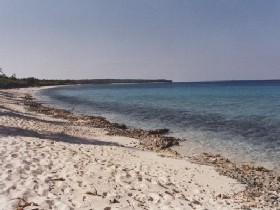 The Guanahacabibes peninsula is located in the easternmost region of the province. The area is covered by numerous caverns and plush vegetation. It’s a flora and fauna sanctuary and its ocean bottoms have plenty of corals. The Roncali lighthouse built in 1847 and named a ship captain dominates the very tip of the peninsula.
Guanahacabibes peninsula is a natural national park declared as Reserve of the Biosphere by UNESCO extends for 745.65 sq mi. There’s connection by road to the María la Gorda international diving center, considered to have the most spectacular ocean bottoms and more than 100 diving sites.
The Guanahacabibes peninsula is located in the easternmost region of the province. The area is covered by numerous caverns and plush vegetation. It’s a flora and fauna sanctuary and its ocean bottoms have plenty of corals. The Roncali lighthouse built in 1847 and named a ship captain dominates the very tip of the peninsula.
Guanahacabibes peninsula is a natural national park declared as Reserve of the Biosphere by UNESCO extends for 745.65 sq mi. There’s connection by road to the María la Gorda international diving center, considered to have the most spectacular ocean bottoms and more than 100 diving sites.
For more information:
www.cuba-lasterrazas.com
,
www.cuba-soroa.com
,
www.cuba-pinardelrio.com
,
www.cuba-marialagorda.com
,
www.tabacoshabanos.com
,
www.cuba-tabacos.com
,
www.cubatabacos.com
|
|
|
ISABEL RUBIO STONE FOREST (BOSQUE DE PIEDRA)
This place, due to its incomparable natural beauty, was declared a National Monument and is located in the settlement of the same name, in the municipality of Guane, in the eastern province of Pinar del Río.
It is located in the mountain chains of Guaniguanico (Cordillera de Guaniguanico), in the extreme eastern part of the Sierra de los Órganos, divided by the Cuyaguateje river, this being the largest river in the province with a high degree of conservation. It is the largest reservoir of fresh water, and within it are a great variety of well preserved ecosystems that host a myriad of species, making it one of the greatest displays of biodiversity on the island.
The landscape is made up of carbonated rocks from the Jagua and Guasasa formations, dating from the Jurassic and Cretacic periods, featuring curious sculpted rocky hillocks (mogotes) that are over ten meters high with suggestive shapes.
For more information:
www.cuba-flora.com
,
www.cuba-geography.com
,
www.cuba-nationalparks.com
,
www.cuba-pinardelrio.com
|
|
|
LEVISA KEY
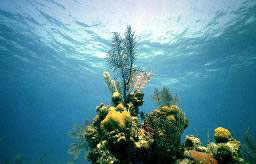 Full of attractive niches created by nature, this paradise is located north of the province of Pinar del Río, a few minutes from the docking point of Palma Rubia on the coast. It is part of the archipelago of Los Colorados, that crowns the north-western coast of Cuba.
The virginal beach, featuring sea bottoms full of attractive corals and marine species, some of which are: parrot fish, barber fish, peacock bass, chubs, coney seabass, mutton snappers, as well as several species of crustaceans such as lobsters. Diving is recommended through the scuba diving centre, especially diving in the area of the Crown of San Carlos (La Corona de San Carlos).
Full of attractive niches created by nature, this paradise is located north of the province of Pinar del Río, a few minutes from the docking point of Palma Rubia on the coast. It is part of the archipelago of Los Colorados, that crowns the north-western coast of Cuba.
The virginal beach, featuring sea bottoms full of attractive corals and marine species, some of which are: parrot fish, barber fish, peacock bass, chubs, coney seabass, mutton snappers, as well as several species of crustaceans such as lobsters. Diving is recommended through the scuba diving centre, especially diving in the area of the Crown of San Carlos (La Corona de San Carlos).
For more information:
www.cuba-cayolevisa.com
|
|
|
LOS PORTALES CAVE (CUEVA DE LOS PORTALES)
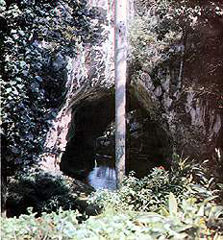 Commander Ernesto Che Guevara established his operations centre here, during the October Crisis or Caribbean Crisis of October 1962. The cave was declared a National Monument and is located in the area of San Andrés, between the Sierras del Rosario and the Sierra de Los Órganos, in the province of Pinar del Río.
In addition to its historical importance, the place has become a tourist attraction from a natural point of view. A Spanish man, who named it after himself, discovered the cave in 1800. It is a permanent tourist attraction, especially among those interested in learning about the life and works of Che Guevara, that great man who in his farewell letter told his children with particular sensitivity and symbolism: your father has been a man who acts as he thinks fit and has been loyal to his convictions.
Commander Ernesto Che Guevara established his operations centre here, during the October Crisis or Caribbean Crisis of October 1962. The cave was declared a National Monument and is located in the area of San Andrés, between the Sierras del Rosario and the Sierra de Los Órganos, in the province of Pinar del Río.
In addition to its historical importance, the place has become a tourist attraction from a natural point of view. A Spanish man, who named it after himself, discovered the cave in 1800. It is a permanent tourist attraction, especially among those interested in learning about the life and works of Che Guevara, that great man who in his farewell letter told his children with particular sensitivity and symbolism: your father has been a man who acts as he thinks fit and has been loyal to his convictions.
For more information:
www.cuba-geography.com
,
www.cuba-history.com
|
|
|
MANTUA
.jpg) One of the fourteen municipalities of the province of Pinar del Río which boasts the condition of National Monument, since it was where General Antonio Maceo ended his invasion from the East to the West (Oriente a Occidente) of the country, during the struggle against Spanish Colonialism in 1895.
The cultural legacy of this area has been maintained, thanks to the work and creative talent of those who have made it their everyday chore of art and literature.
Even in the year of 1866, when the Guildhall of Mantua was built, among its historical documents there were records of the existence of an important movement of amateur artists in that very same year.
Almost one hundred years later, with the triumph of the revolution, the advance of this municipality is significant in every sector of social development.
One of the fourteen municipalities of the province of Pinar del Río which boasts the condition of National Monument, since it was where General Antonio Maceo ended his invasion from the East to the West (Oriente a Occidente) of the country, during the struggle against Spanish Colonialism in 1895.
The cultural legacy of this area has been maintained, thanks to the work and creative talent of those who have made it their everyday chore of art and literature.
Even in the year of 1866, when the Guildhall of Mantua was built, among its historical documents there were records of the existence of an important movement of amateur artists in that very same year.
Almost one hundred years later, with the triumph of the revolution, the advance of this municipality is significant in every sector of social development.
For more information:
www.cuba-culturaltours.com
,
www.cuba-history.com
,
www.cuba-pinardelrio.com
,
www.cuban-culture.com
,
www.cubanphotobank.com
|
|
|
MARIA LA GORDA BEACH
 Located in the far western area of the province of Pinar del Río, its crystalline waters are an invitation for spending the hours in an attractive spot. A good part of the black coral reserves can be found there as well as many varieties of fish, crustaceans and sponges.
An important detail favouring the beach is that right in this area, in the cove of Corrientes is the International Scuba Diving Centre (Centro Internacional de Buceo), also called Maria La Gorda Scuba Diving Centre. This centre pinpoints a total of 35 diving points, where jewfish, barracudas, lobsters, rays, parrot fish and a whole wealth of the stunning Caribbean fauna welcome the visitor. In the midst of the unequalled silence of the depths, there are impressive coral formations as well as majestic underwater grottoes.
Located in the far western area of the province of Pinar del Río, its crystalline waters are an invitation for spending the hours in an attractive spot. A good part of the black coral reserves can be found there as well as many varieties of fish, crustaceans and sponges.
An important detail favouring the beach is that right in this area, in the cove of Corrientes is the International Scuba Diving Centre (Centro Internacional de Buceo), also called Maria La Gorda Scuba Diving Centre. This centre pinpoints a total of 35 diving points, where jewfish, barracudas, lobsters, rays, parrot fish and a whole wealth of the stunning Caribbean fauna welcome the visitor. In the midst of the unequalled silence of the depths, there are impressive coral formations as well as majestic underwater grottoes.
For more information:
www.cuba-pinardelrio.com
,
www.cuba-marialagorda.com
|
|
|
PINAR DEL RIO
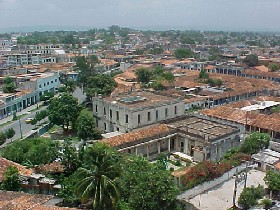 Pinar Del Río is the capital city if the easternmost province of Cuba. The present name was given to it in 1778. The province a territorial extension of 6,788.48 sq mi and has a little over 700,000 inhabitants. The province is located 93.21 mi east of the City of Havana.
Pinar Del Río is a bucolic and attractive city with an architecture predominantly characterized by red-tiles roofs and the presence of many porches that form galleries in some streets.
The city settles in the center of the tobacco growing area and the main attractions are related to the Havana cigars: the surrounding tobacco plantations and the Havana cigar factories. Other places of interest are the Museum of Natural Science, the Guayabita del Pinar liquor factury –an authentic regional product-, the Province Museum of History and the Milanés Theater.
The hospitality of the locals wins the hearts of the visitors. The pinareños are good-natured and extremely friendly and offer plenty solidarity to the visitors. This leaves a pleasant impression in everyone visiting the land of the best tobacco of the world. The province boats an increasing industrial, cultural, and educational development. The electronic components plant and the art instructor school are but few examples.
Pinar Del Río is the capital city if the easternmost province of Cuba. The present name was given to it in 1778. The province a territorial extension of 6,788.48 sq mi and has a little over 700,000 inhabitants. The province is located 93.21 mi east of the City of Havana.
Pinar Del Río is a bucolic and attractive city with an architecture predominantly characterized by red-tiles roofs and the presence of many porches that form galleries in some streets.
The city settles in the center of the tobacco growing area and the main attractions are related to the Havana cigars: the surrounding tobacco plantations and the Havana cigar factories. Other places of interest are the Museum of Natural Science, the Guayabita del Pinar liquor factury –an authentic regional product-, the Province Museum of History and the Milanés Theater.
The hospitality of the locals wins the hearts of the visitors. The pinareños are good-natured and extremely friendly and offer plenty solidarity to the visitors. This leaves a pleasant impression in everyone visiting the land of the best tobacco of the world. The province boats an increasing industrial, cultural, and educational development. The electronic components plant and the art instructor school are but few examples.
For more information:
www.cuba-lasterrazas.com
,
www.cuba-soroa.com
,
www.cuba-zoo.com
,
www.cuba-marialagorda.com
,
www.tabacoshabanos.com
,
www.cuba-tabacos.com
,
www.cubatabacos.com
|
|
|
Prehistory Mural, Viñales
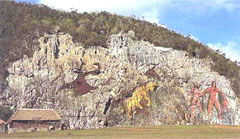 Being intrinsic part of the attractive valley and its mogotes of unsurpassable natural beauty, it is located at Pinar del Río-based Viñales Valley, one of the major places of great tourist attraction in the Cuban western province. It is the Prehistory Mural and as part of the comfortable environment amidst the countryside it boasts an assorted cafeteria and a restaurant, plus the charming camping Dos Hermanas. In this Mural, Cuban artists have portrayed pre-historical moments of the territory, where archeologists and some other researchers have found evidences of the geological development along millions of years.
Being intrinsic part of the attractive valley and its mogotes of unsurpassable natural beauty, it is located at Pinar del Río-based Viñales Valley, one of the major places of great tourist attraction in the Cuban western province. It is the Prehistory Mural and as part of the comfortable environment amidst the countryside it boasts an assorted cafeteria and a restaurant, plus the charming camping Dos Hermanas. In this Mural, Cuban artists have portrayed pre-historical moments of the territory, where archeologists and some other researchers have found evidences of the geological development along millions of years.
For more information:
www.cubanculture.com
,
www.cuba-pinardelrio.com
,
www.cuba-holguin.com
|
|
|
PUERTO ESPERANZA
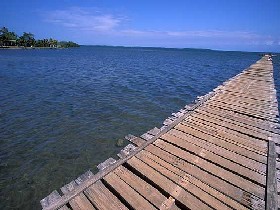 Puerto Esperanza is a small population of 5, 000 inhabitants. Viñales was founded in 1879 consequently Puerto Esperanza has the same foundation date.
Fishing and agriculture are the main activities of the inhabitants of this village.
The breath taking beauty of the landscape and the seascape make this place worthwhile visiting. It is located 14.91 mi from Viñales.
Puerto Esperanza is a small population of 5, 000 inhabitants. Viñales was founded in 1879 consequently Puerto Esperanza has the same foundation date.
Fishing and agriculture are the main activities of the inhabitants of this village.
The breath taking beauty of the landscape and the seascape make this place worthwhile visiting. It is located 14.91 mi from Viñales.
For more information:
www.cuba-lasterrazas.com
,
www.cuba-soroa.com
,
www.cuba-pinardelrio.com
,
www.cuba-marialagorda.com
,
www.tabacoshabanos.com
,
www.cuba-tabacos.com
,
www.cubatabacos.com
|
|
|
ROCALI LIGHTHOUSE
 It has challenged the years and won, it has been a mute witness of shipwrecks, as well as the ferocious attacks of pirates. Its solid structure has resisted the furious winds and lashing rains of several hurricanes that have struck an environment rich in fauna and featuring exuberant plant life.
This building which is 33 metres high is one of the 17 lighthouses working today on the Island, maintaining a permanent watch, and it is considered a first category lighthouse, since it annually guides thousands of vessels from all over the world that sail the Caribbean sea and the Gulf of Mexico. Its message of light can be seen 18 miles away.
It is located in the Peninsula of Guanahacabibes, within one of the six Biosphere Reserves in Cuba, treasuring some 670 species of flora, of which 15 are native of this area.
It has challenged the years and won, it has been a mute witness of shipwrecks, as well as the ferocious attacks of pirates. Its solid structure has resisted the furious winds and lashing rains of several hurricanes that have struck an environment rich in fauna and featuring exuberant plant life.
This building which is 33 metres high is one of the 17 lighthouses working today on the Island, maintaining a permanent watch, and it is considered a first category lighthouse, since it annually guides thousands of vessels from all over the world that sail the Caribbean sea and the Gulf of Mexico. Its message of light can be seen 18 miles away.
It is located in the Peninsula of Guanahacabibes, within one of the six Biosphere Reserves in Cuba, treasuring some 670 species of flora, of which 15 are native of this area.
For more information:
www.cuba-fauna.com
,
www.cuba-pinardelrio.com
|
|
|
SAN DIEGO DE LOS BAÑOS
 San Diego de los Baños, located in the south west region of the province distant 74.56 mi from the City of Havana, is a place of insurmountable beauty. It is flanked by La Guira and its natural park to its northern end and by the Cueva de los Portales of great natural and historical values to its east side.
The small town of 4,000 inhabitants boasts one of the most important mineral waters spas in the country in use since 1700. The spa thermal waters have high contents of sulfur, calcium, and magnesium. The spa specializes in hydrotherapy, and hydro massages, beauty and anti stress treatments, acupuncture and physiotherapy.
San Diego de los Baños, located in the south west region of the province distant 74.56 mi from the City of Havana, is a place of insurmountable beauty. It is flanked by La Guira and its natural park to its northern end and by the Cueva de los Portales of great natural and historical values to its east side.
The small town of 4,000 inhabitants boasts one of the most important mineral waters spas in the country in use since 1700. The spa thermal waters have high contents of sulfur, calcium, and magnesium. The spa specializes in hydrotherapy, and hydro massages, beauty and anti stress treatments, acupuncture and physiotherapy.
For more information:
www.cuba-lasterrazas.com
,
www.cuba-soroa.com
,
www.cuba-pinardelrio.com
,
www.cuba-marialagorda.com
,
www.tabacoshabanos.com
,
www.cuba-tabacos.com
,
www.cubatabacos.com
|
|
|
SAN JUAN Y MARTÍNEZ–SAN LUIS
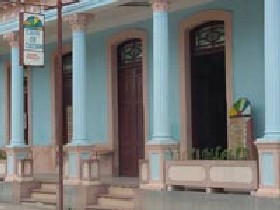 Located some 15.53 mi from Pinar del Río and 111.85 mi west of Havana, these municipalities are closely related to tobacco growing and Havana cigar production. This is region of where the best tobacco is grown. The whole process undergone by tobacco to become a Havana cigar is an attraction visitors may experience: the tobacco plantations, the Drying houses, and the selection of the best leaves. This is the native land of the Hoyo de Monterrey and the Robaina cigars. During the December-March season, tourist may visit the impressive “tapado” tobacco plantations, huge extension of tobacco plantation covered by a light fabric which makes the leaves tender and bigger.
Located some 15.53 mi from Pinar del Río and 111.85 mi west of Havana, these municipalities are closely related to tobacco growing and Havana cigar production. This is region of where the best tobacco is grown. The whole process undergone by tobacco to become a Havana cigar is an attraction visitors may experience: the tobacco plantations, the Drying houses, and the selection of the best leaves. This is the native land of the Hoyo de Monterrey and the Robaina cigars. During the December-March season, tourist may visit the impressive “tapado” tobacco plantations, huge extension of tobacco plantation covered by a light fabric which makes the leaves tender and bigger.
For more information:
www.cuba-lasterrazas.com
,
www.cuba-soroa.com
,
www.cuba-pinardelrio.com
,
www.cuba-marialagorda.com
,
www.tabacoshabanos.com
,
www.cuba-tabacos.com
,
www.cubatabacos.com
|
|
|
SOROA
 Soroa is a paradisiacal place located in the western region of the province just 31.07 mi from the City Of Havana. Soroa has an orchid garden with more than 700 species, 150 of them are Cuban.
Swimming in the waterfall pond is an additional pleasure you don’t want to miss. The water falls 68.90 ft and due to the intense sunlight rainbows form that’s why many refer to Soroa as the “Rainbow of Cuba”. The calm and crystal clear waters of the waterfall are part of the Manantiales River are enjoyed by thousands of tourists.
The river also has mineral medicinal waters very convenient for massages. There is a lookout point 1,230.31 ft with a great view of the plains to the South and the mountain range to the North, something very exclusive.
Other activities in Soroa are horseback riding, trailing, alpinism, and bird watching (there are more than 82 species).
It is of great significance the presence of a vast number of endemic birds: the Tocororo (Priotelus temnurus), the national bird, the Zunzún o Colibrí (Chlorostilbon ricordii), the Carta Cuba (Todus multicolor), el Tomeguín del Pinar (Tiaris canora), among others.
Soroa is a paradisiacal place located in the western region of the province just 31.07 mi from the City Of Havana. Soroa has an orchid garden with more than 700 species, 150 of them are Cuban.
Swimming in the waterfall pond is an additional pleasure you don’t want to miss. The water falls 68.90 ft and due to the intense sunlight rainbows form that’s why many refer to Soroa as the “Rainbow of Cuba”. The calm and crystal clear waters of the waterfall are part of the Manantiales River are enjoyed by thousands of tourists.
The river also has mineral medicinal waters very convenient for massages. There is a lookout point 1,230.31 ft with a great view of the plains to the South and the mountain range to the North, something very exclusive.
Other activities in Soroa are horseback riding, trailing, alpinism, and bird watching (there are more than 82 species).
It is of great significance the presence of a vast number of endemic birds: the Tocororo (Priotelus temnurus), the national bird, the Zunzún o Colibrí (Chlorostilbon ricordii), the Carta Cuba (Todus multicolor), el Tomeguín del Pinar (Tiaris canora), among others.
For more information:
www.cuba-lasterrazas.com
,
www.cuba-soroa.com
,
www.cuba-pinardelrio.com
,
www.cuba-marialagorda.com
,
www.tabacoshabanos.com
,
www.cuba-tabacos.com
,
www.cubatabacos.com
|
|
|
VIÑALES
 Viñales is the most famous of the tourist destinations in Cuba. The landscape is uniquely beautiful dotted with several “mogotes” and tobacco plantations, tobacco drying houses, and peasant’s typical houses. The Viñales Valley is located in the Organos Sierra and it has been declared World Natural Landscape by UNESCO. The region’s flora and fauna is very exclusive and there are the largest and more beautiful cave systems in Latin America.
The lookout point in Los Jazmines Hotel is an excellent place to admire the entire valley, though there’s a different view of the opposite side of the valley from La Ermita Hotel. Other places of interest are: the Indian Cave, the Ruiseñor Valley, the Palenque de los Cimarrones, the Santo Tomás Cave, the Majagua_Canteras and Palmarito cavern system, the San Vicente Valley, and the town of Viñales.
The town of Viñales is picturesque village with an high musical tradition and plastic arts development which is fully integrated with socio-cultural life of the village. It is along with San Diego and Las Terrazas the most attractive human settlement as far as architecture and aesthetics is concerned.
Viñales is the most famous of the tourist destinations in Cuba. The landscape is uniquely beautiful dotted with several “mogotes” and tobacco plantations, tobacco drying houses, and peasant’s typical houses. The Viñales Valley is located in the Organos Sierra and it has been declared World Natural Landscape by UNESCO. The region’s flora and fauna is very exclusive and there are the largest and more beautiful cave systems in Latin America.
The lookout point in Los Jazmines Hotel is an excellent place to admire the entire valley, though there’s a different view of the opposite side of the valley from La Ermita Hotel. Other places of interest are: the Indian Cave, the Ruiseñor Valley, the Palenque de los Cimarrones, the Santo Tomás Cave, the Majagua_Canteras and Palmarito cavern system, the San Vicente Valley, and the town of Viñales.
The town of Viñales is picturesque village with an high musical tradition and plastic arts development which is fully integrated with socio-cultural life of the village. It is along with San Diego and Las Terrazas the most attractive human settlement as far as architecture and aesthetics is concerned.
For more information:
www.cuba-lasterrazas.com
,
www.cuba-soroa.com
,
www.cuba-pinardelrio.com
,
www.cuba-marialagorda.com
,
www.tabacoshabanos.com
,
www.cuba-tabacos.com
,
www.cubatabacos.com
|
|
 They are of an extraordinary beauty. The ideal place for finding them and hoarding a good collection is in the most remote places of the famous Valley of Viñales (Valle de Viñales), in the western-most province of Pinar del Río, although they can be found in other areas of the national geography, but in scarcer numbers.
These terrestrial molluscs of the sacricia species only live three years and a half as maximum and the most appropriate moment for collecting them is from August to September, because from November on they start to hibernate underground until March, when they surface to lay from 15 to 25 tiny eggs.
They multiply rapidly since they are hermaphrodites and fertilise themselves. The colourful polimita snails are of a prehistoric origin.
They are of an extraordinary beauty. The ideal place for finding them and hoarding a good collection is in the most remote places of the famous Valley of Viñales (Valle de Viñales), in the western-most province of Pinar del Río, although they can be found in other areas of the national geography, but in scarcer numbers.
These terrestrial molluscs of the sacricia species only live three years and a half as maximum and the most appropriate moment for collecting them is from August to September, because from November on they start to hibernate underground until March, when they surface to lay from 15 to 25 tiny eggs.
They multiply rapidly since they are hermaphrodites and fertilise themselves. The colourful polimita snails are of a prehistoric origin.
 In 1954, Dr. Antonio Nuñez Jiménez led the first expedition to this site, near the tourist area of Viñales, in the Sierra del Rosario.
Back then, no one could imagine that these caverns would be admired later on as the most important in Cuba, not only due to their magnitude of 45 kilometres, but also because of the scientific wealth they treasure.
Later on several historic events took place, because in 1959 Fidel Castro founded the first troops of military farmers, known as Los Malagones. The cooperative movement became a reality with the Moncada farm and in 1984 the National School of Speleology (Escuela Nacional de Espeleología) was founded by initiative of General Raúl Castro Ruz, Minister of the Revolutionary Armed Forces (Fuerzas Armadas Revolucionarias).
In 1954, Dr. Antonio Nuñez Jiménez led the first expedition to this site, near the tourist area of Viñales, in the Sierra del Rosario.
Back then, no one could imagine that these caverns would be admired later on as the most important in Cuba, not only due to their magnitude of 45 kilometres, but also because of the scientific wealth they treasure.
Later on several historic events took place, because in 1959 Fidel Castro founded the first troops of military farmers, known as Los Malagones. The cooperative movement became a reality with the Moncada farm and in 1984 the National School of Speleology (Escuela Nacional de Espeleología) was founded by initiative of General Raúl Castro Ruz, Minister of the Revolutionary Armed Forces (Fuerzas Armadas Revolucionarias).
 The Guanahacabibes peninsula is located in the easternmost region of the province. The area is covered by numerous caverns and plush vegetation. It’s a flora and fauna sanctuary and its ocean bottoms have plenty of corals. The Roncali lighthouse built in 1847 and named a ship captain dominates the very tip of the peninsula.
Guanahacabibes peninsula is a natural national park declared as Reserve of the Biosphere by UNESCO extends for 745.65 sq mi. There’s connection by road to the María la Gorda international diving center, considered to have the most spectacular ocean bottoms and more than 100 diving sites.
The Guanahacabibes peninsula is located in the easternmost region of the province. The area is covered by numerous caverns and plush vegetation. It’s a flora and fauna sanctuary and its ocean bottoms have plenty of corals. The Roncali lighthouse built in 1847 and named a ship captain dominates the very tip of the peninsula.
Guanahacabibes peninsula is a natural national park declared as Reserve of the Biosphere by UNESCO extends for 745.65 sq mi. There’s connection by road to the María la Gorda international diving center, considered to have the most spectacular ocean bottoms and more than 100 diving sites.
 Full of attractive niches created by nature, this paradise is located north of the province of Pinar del Río, a few minutes from the docking point of Palma Rubia on the coast. It is part of the archipelago of Los Colorados, that crowns the north-western coast of Cuba.
The virginal beach, featuring sea bottoms full of attractive corals and marine species, some of which are: parrot fish, barber fish, peacock bass, chubs, coney seabass, mutton snappers, as well as several species of crustaceans such as lobsters. Diving is recommended through the scuba diving centre, especially diving in the area of the Crown of San Carlos (La Corona de San Carlos).
Full of attractive niches created by nature, this paradise is located north of the province of Pinar del Río, a few minutes from the docking point of Palma Rubia on the coast. It is part of the archipelago of Los Colorados, that crowns the north-western coast of Cuba.
The virginal beach, featuring sea bottoms full of attractive corals and marine species, some of which are: parrot fish, barber fish, peacock bass, chubs, coney seabass, mutton snappers, as well as several species of crustaceans such as lobsters. Diving is recommended through the scuba diving centre, especially diving in the area of the Crown of San Carlos (La Corona de San Carlos).
 Commander Ernesto Che Guevara established his operations centre here, during the October Crisis or Caribbean Crisis of October 1962. The cave was declared a National Monument and is located in the area of San Andrés, between the Sierras del Rosario and the Sierra de Los Órganos, in the province of Pinar del Río.
In addition to its historical importance, the place has become a tourist attraction from a natural point of view. A Spanish man, who named it after himself, discovered the cave in 1800. It is a permanent tourist attraction, especially among those interested in learning about the life and works of Che Guevara, that great man who in his farewell letter told his children with particular sensitivity and symbolism: your father has been a man who acts as he thinks fit and has been loyal to his convictions.
Commander Ernesto Che Guevara established his operations centre here, during the October Crisis or Caribbean Crisis of October 1962. The cave was declared a National Monument and is located in the area of San Andrés, between the Sierras del Rosario and the Sierra de Los Órganos, in the province of Pinar del Río.
In addition to its historical importance, the place has become a tourist attraction from a natural point of view. A Spanish man, who named it after himself, discovered the cave in 1800. It is a permanent tourist attraction, especially among those interested in learning about the life and works of Che Guevara, that great man who in his farewell letter told his children with particular sensitivity and symbolism: your father has been a man who acts as he thinks fit and has been loyal to his convictions.
.jpg) One of the fourteen municipalities of the province of Pinar del Río which boasts the condition of National Monument, since it was where General Antonio Maceo ended his invasion from the East to the West (Oriente a Occidente) of the country, during the struggle against Spanish Colonialism in 1895.
The cultural legacy of this area has been maintained, thanks to the work and creative talent of those who have made it their everyday chore of art and literature.
Even in the year of 1866, when the Guildhall of Mantua was built, among its historical documents there were records of the existence of an important movement of amateur artists in that very same year.
Almost one hundred years later, with the triumph of the revolution, the advance of this municipality is significant in every sector of social development.
One of the fourteen municipalities of the province of Pinar del Río which boasts the condition of National Monument, since it was where General Antonio Maceo ended his invasion from the East to the West (Oriente a Occidente) of the country, during the struggle against Spanish Colonialism in 1895.
The cultural legacy of this area has been maintained, thanks to the work and creative talent of those who have made it their everyday chore of art and literature.
Even in the year of 1866, when the Guildhall of Mantua was built, among its historical documents there were records of the existence of an important movement of amateur artists in that very same year.
Almost one hundred years later, with the triumph of the revolution, the advance of this municipality is significant in every sector of social development.
 Located in the far western area of the province of Pinar del Río, its crystalline waters are an invitation for spending the hours in an attractive spot. A good part of the black coral reserves can be found there as well as many varieties of fish, crustaceans and sponges.
An important detail favouring the beach is that right in this area, in the cove of Corrientes is the International Scuba Diving Centre (Centro Internacional de Buceo), also called Maria La Gorda Scuba Diving Centre. This centre pinpoints a total of 35 diving points, where jewfish, barracudas, lobsters, rays, parrot fish and a whole wealth of the stunning Caribbean fauna welcome the visitor. In the midst of the unequalled silence of the depths, there are impressive coral formations as well as majestic underwater grottoes.
Located in the far western area of the province of Pinar del Río, its crystalline waters are an invitation for spending the hours in an attractive spot. A good part of the black coral reserves can be found there as well as many varieties of fish, crustaceans and sponges.
An important detail favouring the beach is that right in this area, in the cove of Corrientes is the International Scuba Diving Centre (Centro Internacional de Buceo), also called Maria La Gorda Scuba Diving Centre. This centre pinpoints a total of 35 diving points, where jewfish, barracudas, lobsters, rays, parrot fish and a whole wealth of the stunning Caribbean fauna welcome the visitor. In the midst of the unequalled silence of the depths, there are impressive coral formations as well as majestic underwater grottoes.
 Pinar Del Río is the capital city if the easternmost province of Cuba. The present name was given to it in 1778. The province a territorial extension of 6,788.48 sq mi and has a little over 700,000 inhabitants. The province is located 93.21 mi east of the City of Havana.
Pinar Del Río is a bucolic and attractive city with an architecture predominantly characterized by red-tiles roofs and the presence of many porches that form galleries in some streets.
The city settles in the center of the tobacco growing area and the main attractions are related to the Havana cigars: the surrounding tobacco plantations and the Havana cigar factories. Other places of interest are the Museum of Natural Science, the Guayabita del Pinar liquor factury –an authentic regional product-, the Province Museum of History and the Milanés Theater.
The hospitality of the locals wins the hearts of the visitors. The pinareños are good-natured and extremely friendly and offer plenty solidarity to the visitors. This leaves a pleasant impression in everyone visiting the land of the best tobacco of the world. The province boats an increasing industrial, cultural, and educational development. The electronic components plant and the art instructor school are but few examples.
Pinar Del Río is the capital city if the easternmost province of Cuba. The present name was given to it in 1778. The province a territorial extension of 6,788.48 sq mi and has a little over 700,000 inhabitants. The province is located 93.21 mi east of the City of Havana.
Pinar Del Río is a bucolic and attractive city with an architecture predominantly characterized by red-tiles roofs and the presence of many porches that form galleries in some streets.
The city settles in the center of the tobacco growing area and the main attractions are related to the Havana cigars: the surrounding tobacco plantations and the Havana cigar factories. Other places of interest are the Museum of Natural Science, the Guayabita del Pinar liquor factury –an authentic regional product-, the Province Museum of History and the Milanés Theater.
The hospitality of the locals wins the hearts of the visitors. The pinareños are good-natured and extremely friendly and offer plenty solidarity to the visitors. This leaves a pleasant impression in everyone visiting the land of the best tobacco of the world. The province boats an increasing industrial, cultural, and educational development. The electronic components plant and the art instructor school are but few examples.
 Being intrinsic part of the attractive valley and its mogotes of unsurpassable natural beauty, it is located at Pinar del Río-based Viñales Valley, one of the major places of great tourist attraction in the Cuban western province. It is the Prehistory Mural and as part of the comfortable environment amidst the countryside it boasts an assorted cafeteria and a restaurant, plus the charming camping Dos Hermanas. In this Mural, Cuban artists have portrayed pre-historical moments of the territory, where archeologists and some other researchers have found evidences of the geological development along millions of years.
Being intrinsic part of the attractive valley and its mogotes of unsurpassable natural beauty, it is located at Pinar del Río-based Viñales Valley, one of the major places of great tourist attraction in the Cuban western province. It is the Prehistory Mural and as part of the comfortable environment amidst the countryside it boasts an assorted cafeteria and a restaurant, plus the charming camping Dos Hermanas. In this Mural, Cuban artists have portrayed pre-historical moments of the territory, where archeologists and some other researchers have found evidences of the geological development along millions of years. Puerto Esperanza is a small population of 5, 000 inhabitants. Viñales was founded in 1879 consequently Puerto Esperanza has the same foundation date.
Fishing and agriculture are the main activities of the inhabitants of this village.
The breath taking beauty of the landscape and the seascape make this place worthwhile visiting. It is located 14.91 mi from Viñales.
Puerto Esperanza is a small population of 5, 000 inhabitants. Viñales was founded in 1879 consequently Puerto Esperanza has the same foundation date.
Fishing and agriculture are the main activities of the inhabitants of this village.
The breath taking beauty of the landscape and the seascape make this place worthwhile visiting. It is located 14.91 mi from Viñales.
 It has challenged the years and won, it has been a mute witness of shipwrecks, as well as the ferocious attacks of pirates. Its solid structure has resisted the furious winds and lashing rains of several hurricanes that have struck an environment rich in fauna and featuring exuberant plant life.
This building which is 33 metres high is one of the 17 lighthouses working today on the Island, maintaining a permanent watch, and it is considered a first category lighthouse, since it annually guides thousands of vessels from all over the world that sail the Caribbean sea and the Gulf of Mexico. Its message of light can be seen 18 miles away.
It is located in the Peninsula of Guanahacabibes, within one of the six Biosphere Reserves in Cuba, treasuring some 670 species of flora, of which 15 are native of this area.
It has challenged the years and won, it has been a mute witness of shipwrecks, as well as the ferocious attacks of pirates. Its solid structure has resisted the furious winds and lashing rains of several hurricanes that have struck an environment rich in fauna and featuring exuberant plant life.
This building which is 33 metres high is one of the 17 lighthouses working today on the Island, maintaining a permanent watch, and it is considered a first category lighthouse, since it annually guides thousands of vessels from all over the world that sail the Caribbean sea and the Gulf of Mexico. Its message of light can be seen 18 miles away.
It is located in the Peninsula of Guanahacabibes, within one of the six Biosphere Reserves in Cuba, treasuring some 670 species of flora, of which 15 are native of this area.
 San Diego de los Baños, located in the south west region of the province distant 74.56 mi from the City of Havana, is a place of insurmountable beauty. It is flanked by La Guira and its natural park to its northern end and by the Cueva de los Portales of great natural and historical values to its east side.
The small town of 4,000 inhabitants boasts one of the most important mineral waters spas in the country in use since 1700. The spa thermal waters have high contents of sulfur, calcium, and magnesium. The spa specializes in hydrotherapy, and hydro massages, beauty and anti stress treatments, acupuncture and physiotherapy.
San Diego de los Baños, located in the south west region of the province distant 74.56 mi from the City of Havana, is a place of insurmountable beauty. It is flanked by La Guira and its natural park to its northern end and by the Cueva de los Portales of great natural and historical values to its east side.
The small town of 4,000 inhabitants boasts one of the most important mineral waters spas in the country in use since 1700. The spa thermal waters have high contents of sulfur, calcium, and magnesium. The spa specializes in hydrotherapy, and hydro massages, beauty and anti stress treatments, acupuncture and physiotherapy.
 Located some 15.53 mi from Pinar del Río and 111.85 mi west of Havana, these municipalities are closely related to tobacco growing and Havana cigar production. This is region of where the best tobacco is grown. The whole process undergone by tobacco to become a Havana cigar is an attraction visitors may experience: the tobacco plantations, the Drying houses, and the selection of the best leaves. This is the native land of the Hoyo de Monterrey and the Robaina cigars. During the December-March season, tourist may visit the impressive “tapado” tobacco plantations, huge extension of tobacco plantation covered by a light fabric which makes the leaves tender and bigger.
Located some 15.53 mi from Pinar del Río and 111.85 mi west of Havana, these municipalities are closely related to tobacco growing and Havana cigar production. This is region of where the best tobacco is grown. The whole process undergone by tobacco to become a Havana cigar is an attraction visitors may experience: the tobacco plantations, the Drying houses, and the selection of the best leaves. This is the native land of the Hoyo de Monterrey and the Robaina cigars. During the December-March season, tourist may visit the impressive “tapado” tobacco plantations, huge extension of tobacco plantation covered by a light fabric which makes the leaves tender and bigger.
 Soroa is a paradisiacal place located in the western region of the province just 31.07 mi from the City Of Havana. Soroa has an orchid garden with more than 700 species, 150 of them are Cuban.
Swimming in the waterfall pond is an additional pleasure you don’t want to miss. The water falls 68.90 ft and due to the intense sunlight rainbows form that’s why many refer to Soroa as the “Rainbow of Cuba”. The calm and crystal clear waters of the waterfall are part of the Manantiales River are enjoyed by thousands of tourists.
The river also has mineral medicinal waters very convenient for massages. There is a lookout point 1,230.31 ft with a great view of the plains to the South and the mountain range to the North, something very exclusive.
Other activities in Soroa are horseback riding, trailing, alpinism, and bird watching (there are more than 82 species).
It is of great significance the presence of a vast number of endemic birds: the Tocororo (Priotelus temnurus), the national bird, the Zunzún o Colibrí (Chlorostilbon ricordii), the Carta Cuba (Todus multicolor), el Tomeguín del Pinar (Tiaris canora), among others.
Soroa is a paradisiacal place located in the western region of the province just 31.07 mi from the City Of Havana. Soroa has an orchid garden with more than 700 species, 150 of them are Cuban.
Swimming in the waterfall pond is an additional pleasure you don’t want to miss. The water falls 68.90 ft and due to the intense sunlight rainbows form that’s why many refer to Soroa as the “Rainbow of Cuba”. The calm and crystal clear waters of the waterfall are part of the Manantiales River are enjoyed by thousands of tourists.
The river also has mineral medicinal waters very convenient for massages. There is a lookout point 1,230.31 ft with a great view of the plains to the South and the mountain range to the North, something very exclusive.
Other activities in Soroa are horseback riding, trailing, alpinism, and bird watching (there are more than 82 species).
It is of great significance the presence of a vast number of endemic birds: the Tocororo (Priotelus temnurus), the national bird, the Zunzún o Colibrí (Chlorostilbon ricordii), the Carta Cuba (Todus multicolor), el Tomeguín del Pinar (Tiaris canora), among others.
 Viñales is the most famous of the tourist destinations in Cuba. The landscape is uniquely beautiful dotted with several “mogotes” and tobacco plantations, tobacco drying houses, and peasant’s typical houses. The Viñales Valley is located in the Organos Sierra and it has been declared World Natural Landscape by UNESCO. The region’s flora and fauna is very exclusive and there are the largest and more beautiful cave systems in Latin America.
The lookout point in Los Jazmines Hotel is an excellent place to admire the entire valley, though there’s a different view of the opposite side of the valley from La Ermita Hotel. Other places of interest are: the Indian Cave, the Ruiseñor Valley, the Palenque de los Cimarrones, the Santo Tomás Cave, the Majagua_Canteras and Palmarito cavern system, the San Vicente Valley, and the town of Viñales.
The town of Viñales is picturesque village with an high musical tradition and plastic arts development which is fully integrated with socio-cultural life of the village. It is along with San Diego and Las Terrazas the most attractive human settlement as far as architecture and aesthetics is concerned.
Viñales is the most famous of the tourist destinations in Cuba. The landscape is uniquely beautiful dotted with several “mogotes” and tobacco plantations, tobacco drying houses, and peasant’s typical houses. The Viñales Valley is located in the Organos Sierra and it has been declared World Natural Landscape by UNESCO. The region’s flora and fauna is very exclusive and there are the largest and more beautiful cave systems in Latin America.
The lookout point in Los Jazmines Hotel is an excellent place to admire the entire valley, though there’s a different view of the opposite side of the valley from La Ermita Hotel. Other places of interest are: the Indian Cave, the Ruiseñor Valley, the Palenque de los Cimarrones, the Santo Tomás Cave, the Majagua_Canteras and Palmarito cavern system, the San Vicente Valley, and the town of Viñales.
The town of Viñales is picturesque village with an high musical tradition and plastic arts development which is fully integrated with socio-cultural life of the village. It is along with San Diego and Las Terrazas the most attractive human settlement as far as architecture and aesthetics is concerned.